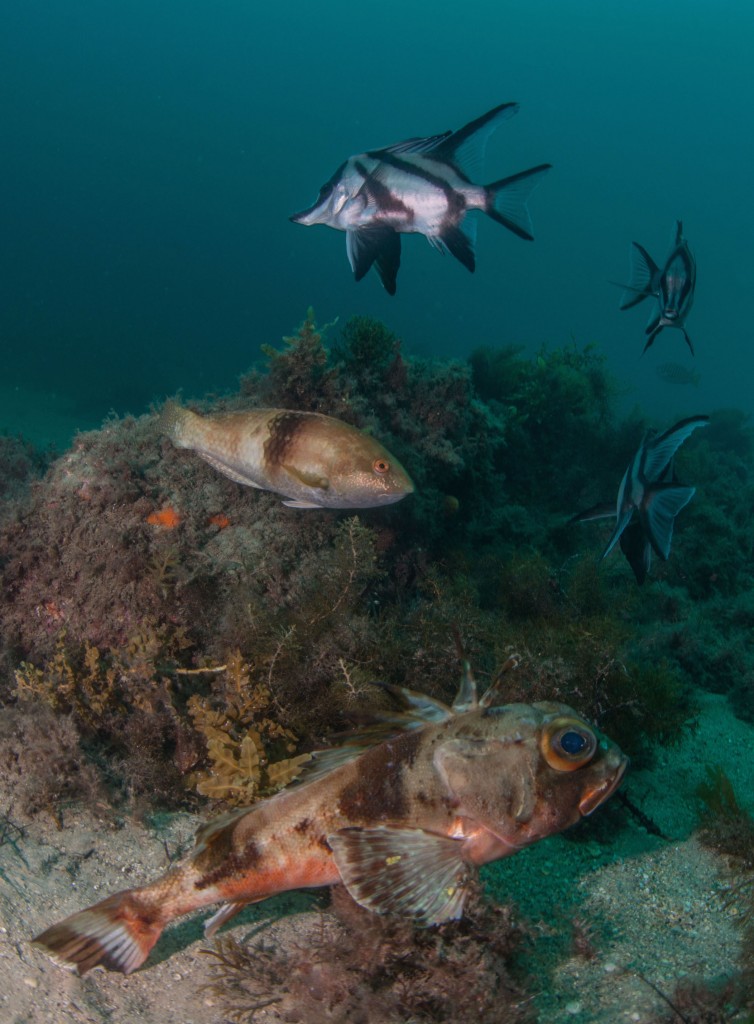This February, RLS initiated a project with Cradle Coast Natural Resource Management (CCNRM), funded through the Natural Connections grants program. The project, funded by CCNRM with support from the Australian Government’s National Landcare Program, aimed to establish a local team of RLS divers, and survey a set of core sites for future monitoring. The team and trainees met in Sisters Beach, a lovely community just east of Rocky Cape.
The Hobart team, led by Rick Stuart-Smith, included Scott Ling, German Soler, Laurel Trebilco and Carolina Garcia. Three trainees living in Tassie’s beautiful North West, Fred Rueff, Jeremy Ward and Grant Pearce, all had various backgrounds, skill levels and reasons for wanting to volunteer with RLS. “I’ve become bored with only hunting for crays and abs when I go diving. I want to learn what else I’m looking at under water”, said Jeremy during the training course.
And learn they did! Over the four days of training, each trainee completed eight survey dives, began learning scientific names for over 40 fish species and spent the evenings practicing data entry and photo editing. In total, the team surveyed 24 transects at eight sights and identified 46 species of fish (Method 1) and 49 species of cryptic fish and invertebrates (Method 2), with 36,125 individual fish and invertebrates identified and counted!

All the equipment needed to conduct RLS surveys, such as the large slate and data sheet, camera and transect reel, can be overwhelming at first. Fred wasn’t shy to admit that the surveys “are tough work”. But no one was complaining about the balmy 19°C water and calm, sunny conditions that persisted throughout the trip. Each trainee put in a huge effort and the team was pleased with the progress they made over such a short period.
The reefs surrounding Rocky Cape and Sisters Beach had not been surveyed in almost 10 years. The area was last surveyed when Rick led a UTas field team here as part of “the Lap of Tassie”, a year-long effort to survey Tasmania’s reefs, in 2006-2007. Rocky Cape is an interesting place to survey, due in part to its geology and exposure to swells, jutting out into Bass Strait and bearing more wave energy than most other parts of the northern Tasmanian coast. These factors result in different species of macroalgae dominating, and different habitats for fishes and invertebrates.
Interesting records from this survey trip included three species which have probably not been officially recorded from the Tasmanian coast before: Optivus agastos (violet roughy), Trachichthys australis (roughy), and Siphonognathus caninis (sharp nose weed whiting). These are small fish species that tend to live deep under ledges (the former two) or are closely associated with the kelp (the latter), and would likely be missed by divers or fishers. These observations highlight the value of the thorough searches and identification of every species seen along transects by RLS divers.
Local media covered the trip, including a story in the Advocate and the Circular Head Chronicle.
Everyone is already looking forward to the next Rocky Cape trip, during which more locals will be trained, and hopefully an active and committed local node of RLS divers established. A massive thanks is due to all the volunteers who organized and attended as well as a big thank you for the support from Cradle Coast Natural Resource Management team, including Dionna Newton and Anna Wind.
